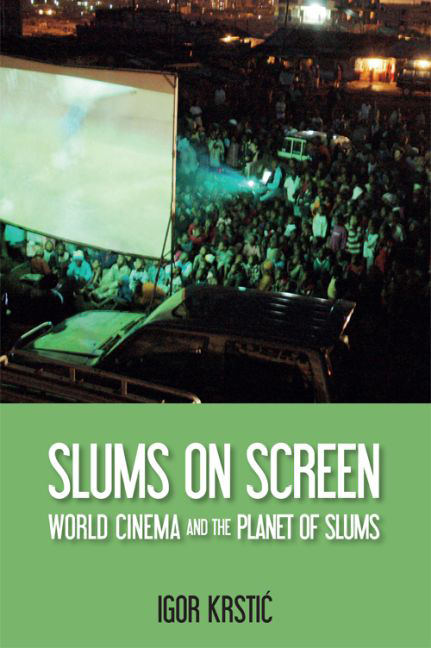Book contents
- Frontmatter
- Contents
- List of Figures
- Acknowledgements
- Introduction
- 1 Slums on and off Screen
- Part One Global Currents
- 2 Sensational Remediations
- 3 Documentary Mappings
- 4 Neorealist Narratives
- 5 Third Docufictions
- 6 Postmodern Bricolages
- 7 Digital Realisms
- Part Two Local Expressions
- Conclusion
- Bibliography
- Index
2 - Sensational Remediations
from Part One - Global Currents
- Frontmatter
- Contents
- List of Figures
- Acknowledgements
- Introduction
- 1 Slums on and off Screen
- Part One Global Currents
- 2 Sensational Remediations
- 3 Documentary Mappings
- 4 Neorealist Narratives
- 5 Third Docufictions
- 6 Postmodern Bricolages
- 7 Digital Realisms
- Part Two Local Expressions
- Conclusion
- Bibliography
- Index
Summary
By the end of the [nineteenth] century the slum – tied to a panoply of issues (jobs, crime, disease, race, social justice) – had become a topic of high visibility. This development coincided with the birth of movies …
Douglas Muzzio and Thomas HalperA photograph depicts a moment in a narrow back alley. A series of figures stare back at the camera. One bearded man carries a thick metal pole, ready to use it, it seems. Another man, much younger and closer to the camera, is trying to look as laid-back as possible but still can not conceal his strain. Another young man, perched on the railings of a staircase further in the background, smokes a cigarette and looks more suspiciously at the camera and his operator. They appear to be guarding the secrets of this alley in which eleven (or are there twelve?) more people are looking straight at the photographer. Are they posing for him? Or did they just happen to be in the alley when the photographer decided to take a picture there, curious, perhaps, to see the apparatus at work? Suspicious, perhaps, of its power to disclose what better remains concealed? The upper part of the image gives the impression of cleanliness and fresh air, as it is mostly covered with laundry stretched between buildings. This part of the image is reminiscent of romantic sceneries from Italian cities like Naples, famous for their similarly narrow alleyways. However, this particular big city alley does not invoke any notions of romanticism. The image suggests that this is a tough man's world – or back-alley – even though we can also see a few women in it. One of these female figures seems to disappear from the setting like a ghost, as if expelled from the frame during exposure time. Another ghostly figure of what appears to be a lonely (or abandoned?) young girl stands on the railings of another staircase in the background of the image. Yet, while men occupy (or guard) the space aggressively and women and children (dis)appear like ghosts at the fringes, the very centre of the photograph displays an utterly repulsive scenario: a dead animal is strewn across the alley's dirty ground.
- Type
- Chapter
- Information
- Slums on ScreenWorld Cinema and the Planet of Slums, pp. 43 - 68Publisher: Edinburgh University PressPrint publication year: 2016



